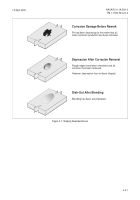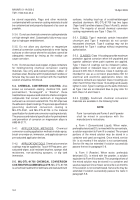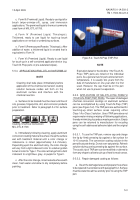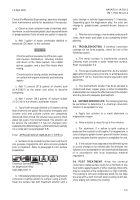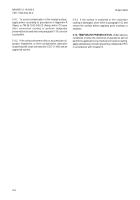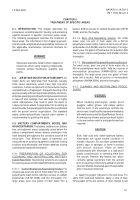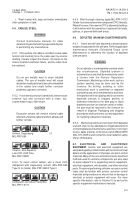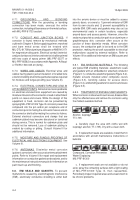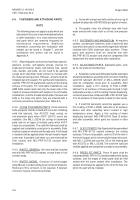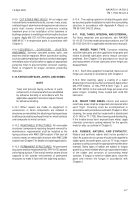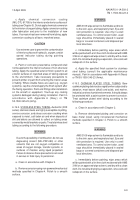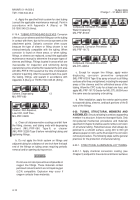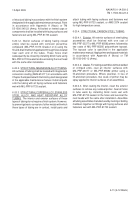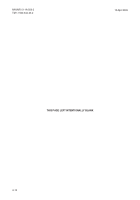TM-1-1500-344-23-2 - Page 107 of 240
6-3
NAVAIR 01-1A-509-2
TM 1-1500-344-23-2
15 April 2009
j. Wash hands with soap and water immediately
after completion of task.
6-5. CABLES, STEEL.
WARNING
Consult maintenance manuals for cable
detensioning and tensioning requirements prior
to performing any maintenance.
6-5.1. If the surface of a cable is corroded, relieve cable
tension and carefully force the cable open by reverse
twisting. Visually inspect the interior. Corrosion on the
interior strands constitutes failure, and the cable must
be replaced.
CAUTION
Do not use metallic wool to clean installed
cables. The use of metallic wool will cause
dissimilar metal particles to become embedded
in the cables and create further corrosion
problems (galvanic corrosion).
6-5.2. If no internal corrosion is detected, remove loose
external rust and corrosion with a clean, dry,
coarse-weave rag or fiber brush.
CAUTION
Excessive solvent will remove internal cable
lubricant and allow cable strands to abrade and
further corrode.
Solvent, Degreasing
13
MIL-PRF-680
Cleaner, Non-Aqueous,
15
Low VOC, HAP Free,
MIL-PRF-32295
6-5.3. To clean control cables, use a clean cloth
dampened with degreasing solvent (MIL-PRF-680
Type II) or cleaner (MIL-PRF-32295 Type I).
Compound, Corrosion Preventive
6
MIL-PRF-16173
6-5.4. After thorough cleaning, apply MIL-PRF-16173
Grade 4 corrosion preventive compound (CPC) liberally.
Wipe off excess. If excessive CPC is allowed to build up,
it will interfere with the operation of cables at fair-leads,
pulleys, or grooved bellcrank areas.
6-6.
DEPLETED URANIUM COUNTERWEIGHTS.
6-6.1.
Some aircraft have depleted uranium balance
weights incorporated in the airframe. Refer to applicable
maintenance manuals (Scheduled Depot Level
Maintenance) to determine the location of depleted
uranium parts.
WARNING
Do not abrade or sand depleted uranium under
any circumstances. Depleted uranium is
extremely toxic and shall be worked only under
a license from the Nuclear Regulatory
Commission. Machining or other work, such as
surface sanding, may be done only by the
licensee. No drilling, sanding, or other
mechanical work is permitted on depleted
uranium by any service maintenance activities.
If the protective finish (plating) which covers the
depleted uranium is chipped, peeled, or
otherwise removed so the dark gray or black
depleted uranium (or uranium oxide) is visible,
the part must be returned to the licensee for
rework or disposal. Packaging and shipping
procedures shall conform to current regulations
for handling radioactive materials.
6-6.2.
Mechanical removal of corrosion from depleted
uranium shall not be attempted at Organizational/Unit
or Intermediate level maintenance activities. If corrosion
occurs, apply a liberal, continuous coat of AMLGUARD
(MIL-DTL-85054) and contact the local radiation safety
officer immediately.
6-7.
ELECTRICAL
AND
ELECTRONIC
EQUIPMENT
. Avionic and electrical equipment are
easily damaged by contamination with corrosion removal
debris and by application of improper corrosion control
materials. Many of the conventional corrosion treatment
methods used on airframe components are also used
on areas adjacent to or supporting avionic equipment,
electrical equipment, wire bundles, and other electrical
parts. Personnel performing airframe corrosion control
tasks shall be familiar with avionic corrosion control
materials and procedures to ensure that no damage to
electrical or avionic equipment will occur. For more
specific information, refer to Volume III, as well as the
specific equipment maintenance manuals.
Change 1 - 31 March 2010
Back to Top

